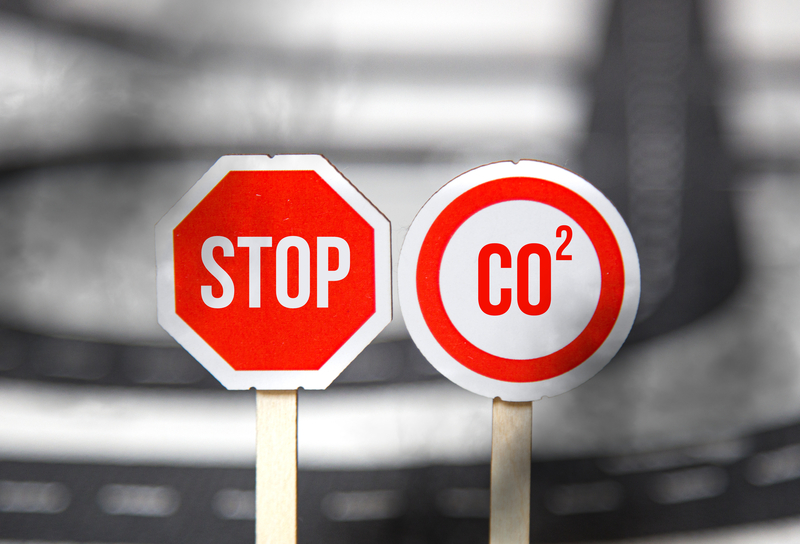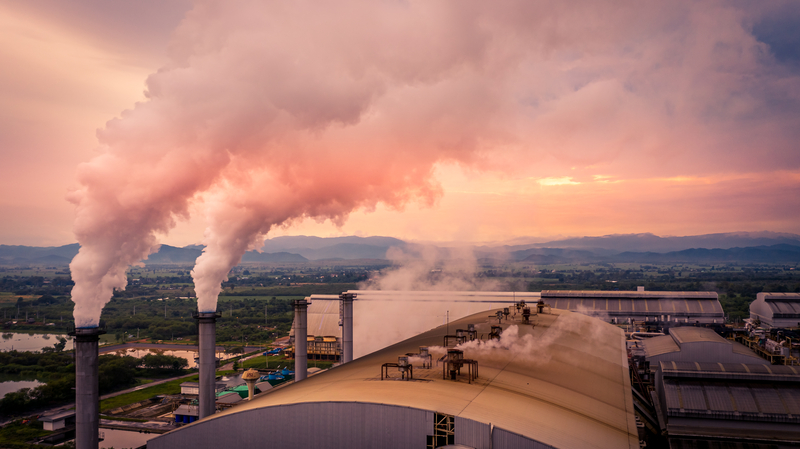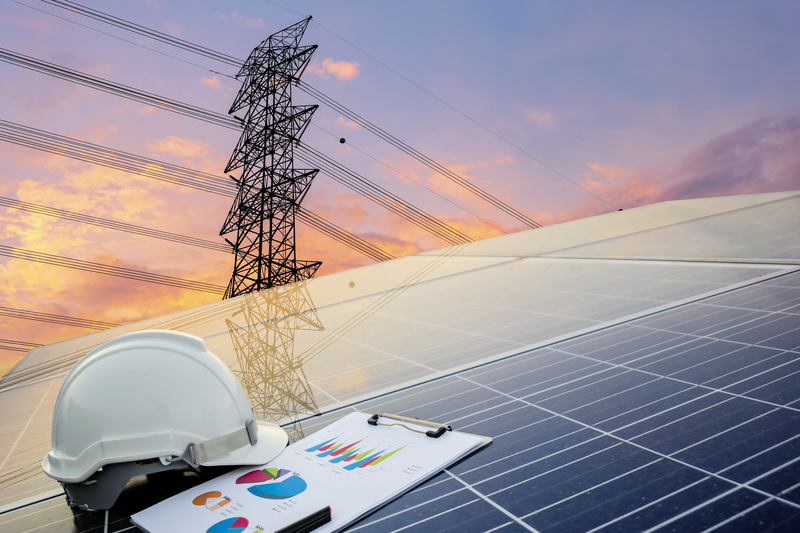
Local Law 97 is one of several NYC local laws expected to have a large impact on building owners throughout New York City in the coming years. In fact buildings are one of the top contributors of carbon emissions, and NYC’s residential and commercial buildings contribute roughly 70% of the total CO2 emissions in the city. That’s why the NYC Council has implemented this climate change mitigation strategy, which has made reducing emissions of built infrastructure a priority.
Luckily, Local Law 97 compliance won’t be as tedious as it many have made it seem. In this article, we’ll cover everything building owners need to know about NYC Local Law 97 compliance and how to reduce your carbon footprint.
Aggressive Energy is committed to giving our clients the tools and resources they need to be both financially and energy efficient. For more help on NYC local law compliance, check out our complete guide to New York City building compliance.
Read on for our Local Law 97 compliance guide for NYC building owners!
What Is Local Law 97?

Local Law 97 (also known as LL97) was passed in New York City as a part of the Climate Mobilization Act. Local Law 97 requires buildings larger than 25,000 square feet to meet strict greenhouse gas emissions limits. This new law will affect 50,000 buildings across the city. The main goal of these new LL98 laws were created in an effort to reduce carbon dioxide emissions from commercial buildings in the city.
Who Does Local Law 97 Apply To?
NYC Local Law 97 applies to commercial buildings larger than 25,000 square feet. These buildings must keep their carbon emissions under a set limit each year to avoid carbon fines and are referred to as “covered buildings” in the legislation. The limits are set based on building type.
If you own a group of two or buildings with a total area over 50,000 square feet under the same tax lot, you will also have to comply, even if one of those buildings is under 25,000 square feet on its own. Buildings owned by the city, buildings that have one or more rent-regulated units, certain types of affordable housing, and buildings of worship are exempt.
What Are the Local Law 97 Compliance Periods?
LL97 will be implemented across the city in two phases. Each phase will have set emission limits on NYC’s large commercial and residential buildings. The two LL97 periods are
- Initial period of 2024-2029
- Second period of 2030-2034
What Are The Local Law 97 Carbon Emission Targets?

Emission limits for Local Law 97 are set based on type of occupancy spaces within the building. For instance, a mixed-use building, with a ground floor serving as retail space and the rest as residential, calculates its emission limits proportionately to the square footage of type of space.
Here is a list of carbon emission limits by occupancy classifications for Local Law 97:
What Does Local Law 97 Compliance Require?
Compliance requires building owners to create and present an emissions intensity report with a registered design professional’s stamp of approval. Under these filings building owners must report carbon emissions from the previous year. Since the first year of reporting will cover 2024, you’ll submit your first report in 2025. This will continue annually with a deadline of May 1 each year.
This NYC green building law sets out building limits through 2050 in periodic phases, gradually increasing limits on carbon dioxide emissions from buildings. The first two compliance periods are 2024-2029 and 2030-2034, with the rest of the phases to be set by January 2023.
Failure To Comply With LL97

If you fail to comply with Local Law 97, you’ll be fined $268 per metric ton that the building’s carbon footprint surpasses the limit. However, if you develop a history of noncompliance, the Local Law 97 advisory board has the right to take that (along with other relevant factors) into consideration when imposing a penalty.
Houses of worship, buildings with regulated units and other forms of affordable housing are excluded from the bill. The Deal also establishes the Property Assessed Clean Energy (PACE) program to facilitate retrofits through long-term financing, and requires installation of solar PV and green roofs on new buildings and major renovations. PACE financing is tied to the property and not the owner, allowing obligations to be transferred to a new owner when the property is sold and assuaging concerns about securing long-term savings from large retrofit investments.
Failure to submit your Local Law 97 report
If you fail to submit a report, you’ll be fined $0.50 for each square foot of your building, for each month that the violation is not corrected within 12 months. Fortunately, you have a grace period of 60 days within the due date. If you submit your report within that timeframe, you won’t be liable for that fine. Still, don’t wait until the last minute and give yourself an unnecessary headache!
Submitting a Local Law 97 report with false statements
Hopefully, lying on your report isn’t an option you would consider, but just in case: If your report contains any false statement(s), you’ll be charged with a misdemeanor and subject to a fine of up to $500,000. You could also face a 30-day prison sentence.
How To Test For Carbon Emissions Under Local Law 97

Carbon emissions, also known as building emissions, are emissions of greenhouse gases, such as carbon dioxide. A building’s emissions are created as a result of its operational functions. The total amount of greenhouse gases you emit is your carbon footprint.
Calculate your carbon footprint and building emissions intensity
The first step to complying with Local Law 97 is to calculate your building’s current emissions. This can be done by inputting the type and quantity of fuel used in the building into the free US EPA’s Energy Star Portfolio Manager. This will allow you to gauge the excess emissions you need to eliminate in order to comply with the new law.’ If your building is in the process of completing your Local Law 87 energy audit, this could be a good place to start. Ask your energy auditor to look into longer-term energy saving strategies.
How To Reduce Carbon Emissions To Meet Local Law 97 Goals
How Local Law 97 Impacts Building Owners

LL87 requires emissions to be reduced by 40% city-wide by 2030, which is a 26% reduction for carbon dioxide emissions from buildings. That equates to about 5.3 million metric tons, a number equivalent to the total emissions from the city of San Francisco.
The NYC green building law impacts nearly 50,000 buildings, many of which are critically above their emissions limit. This means a LOT of buildings will more than likely require substantial energy management system updates or alternate compliance by 2030. This was designed purposefully: By making 2024-2029 limits easier for the standard building to comply with, you have nearly a decade to prepare for the much tighter limits beginning in 2030.
Financially Preparing For LL97 And Its Varying Phases
You may think 9 years is plenty of time to prepare, but keep in mind that switching to clean energy on a large scale can cost a hefty upfront fee. Even if you were planning to sell that property in the next few years, potential buyers will take the cost of the necessary upgrades into account. This means you’d get less money than you probably hoped for, whereas upgrading the energy system could only add value.
Keep in mind that if your building usage is largely determined by tenants, you’ll have to create a plan that involves working together. Any plans or requirements will need to be communicated to current and future tenants.
Where Can I Find Additional Local Law 97 Information?
The 21-page Local Law 97 document is available for download here. You can also find it later by accessing the official NYC Local Laws webpage. The Urban Green Council has created a two-page NYC Building Emissions Law summary that you may also find resourceful.
If you are interested in learning more about Local Law 97 and how you can start to reduce your carbon emissions be sure to contact us online, call our office at 888-836-9222 or fill out the form below!
Speak With A Local Law 97 Energy Expert Now
Reducing carbon emissions is key to combat climate change. With so many businesses and individuals interested in how to solve climate change we wanted to take some time to explain how you can make an impact.
In this article, we’ll cover all the basics of what carbon dioxide emissions from buildings are and why reducing greenhouse gas emissions is well worth the investment. We hope you find this information helpful and please be sure to reach out to us to learn how we can help you increase your energy efficiency and decrease your carbon emissions!
So if you’re ready to learn about how to combat climate change read on!
What Are Carbon Emissions?

Carbon emissions refer to the release of carbon dioxide into the air during the combustion of fossil fuels. They make up the majority of greenhouse gas emissions, which is the biggest cause of climate change. The amount of greenhouse emissions made by a building, city, country, and so on is known as its carbon footprint.
What causes carbon emissions?
CO2 emissions occur during the combustion, or burning, of fossil fuels such as coal, natural gas, and oil. Another huge factor is forest degradation. When trees are destroyed, their carbon is released into the atmosphere as carbon dioxide.
How do carbon emissions cause climate change?
High levels of carbon dioxide emission cause climate change by trapping heat from the sun close to the surface of the Earth, heating its temperature. Climate change is essentially the catch-all term for global warming, intensified natural disasters, rising sea levels, infertile soil for agriculture, and more.
Related Post: Energy Conservation Tips to Reduce Business Expenses
How Much Do Buildings Account for Carbon Emissions?

In 2019, energy consumption from all buildings – commercial and residential – indirectly accounted for over 30% of all US carbon emissions. This amount was an all-time high. 2020 would have probably looked similar, but US and world greenhouse gas emissions plunged as a result of the COVID-19 pandemic. Buildings contribute to emissions in two ways.
- Direct emissions are a result of burning fossil fuels like natural gas for heat.
- Indirect emissions are a result of using energy from power plants that burn fuel to generate electricity.
Directly, buildings account for about 12.5% of greenhouse gas emissions in the US.
How to Start Reducing Carbon Emissions

Reducing greenhouse gas emissions from buildings as a building owner is intimidating, to say the least. You’re in an unprecedented position. The good news is, you’re not alone. More and more companies are recognizing the need for change and calling for action.
However, just because you recognize the need doesn’t mean you know how to actually take action. That’s why we’re giving you some actionable items to implement as steps of your very own emissions reduction plan.
Review state guidelines for energy code compliance
President Biden’s recent commitment to reduce the carbon footprint of the United States and cut 50% by 2030 as part of the country’s pledge to the Paris climate agreement is not the only thing you need to be aware of. Each state has a set of energy codes for buildings.
The energy codes help in reducing carbon emissions from construction as well as buildings. State and local governments oversee energy code compliance, so be sure to research codes and benchmarking requirements for your area. This will help you get an idea of what your next steps should be.
If you’re a building owner in New York City, you’ll need to know about compliance with local laws, such as Local Law 97 which was created in an effort to combat the city’s extreme levels of CO2 emission. If you’re not in NYC, it’s still a good idea to read the requirements these local laws set there. They may not apply to you, but you’ll get a decent understanding of what to potentially expect from your own city in the future.
Start the switch to carbon-free energy
Carbon-free energy is found in green energy sources like hydro, wind, and solar power. These energy sources do not emit carbon dioxide when they’re converted into electricity. You can reduce carbon dioxide emissions from buildings directly by doing things such as installing solar panels and switching from natural gas.
For this step, it’s a good idea to include your energy provider in the conversation. If they’re anything like we are at Aggressive Energy, they’ll help you identify any areas in your energy infrastructure that could be done cleaner and more sustainable. If they’re not like us, give us a call and we’ll get you on the right track!
Set specific (but attainable) goals
Remember, you don’t have to come up with a detailed plan in one sitting. On the other hand, you also shouldn’t wait much longer to get started. There are plenty of ways you can start small. After doing your research, start assessing your current energy infrastructure. Your plan may be pretty straightforward, or it might require a bit of time and investment.
Whichever it is, take it step by step and create a plan to reduce emissions that’s sustainable to your business. Break down the overarching goal into separate milestones big or small, then hold yourself accountable to reaching them
Is Reducing Carbon Emissions Worth The Cost?

The only perceivable downside to fighting climate change is the upfront cost. However, the future of our planet depends largely on the actions we take to reduce greenhouse gas emissions over the next decade.
The cost may still seem alarming, but keep in mind the return on investment will counteract that in the long run. Renewable resources will cost your business less than if you were to continue to use fossil fuels.
That’s not the only long-term benefit, either. The Biden administration is placing a lot of emphasis on creating clean energy industry jobs through their efforts to combat climate change. Investing in reducing carbon emissions is also an investment in the clean energy industry that creates jobs in your community.
When creating a plan to make carbon-free energy a priority, having an experienced energy provider will save you an abundance of stress. At Aggressive Energy, we’ll help you set and meet even the most ambitious energy management goals at a pace that works best for you.
We understand the commitment it takes to power a business, which is why we’re committed to giving our customers value-added services like 24/7 customer support. Whatever it is, we’ve got the resources to get you where you want to be.
Contact us today to learn how we can work for you!